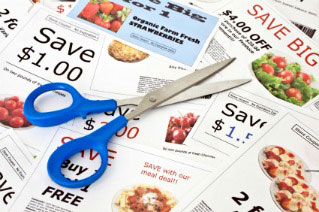Proper nutrition is often among the first victims in tough economic times (such as college days) but cutting back on food costs doesn’t have to mean going on the ramen diet. There are many ways to save money while still eating a nutritious, healthy diet.
Avoiding Restaurants
While this may be an obvious one, fact of the matter is that there are countless benefits to preparing and eating your meals at home.
Staying away from restaurants will definitely save you money, but it also allows you to choose only the healthiest ingredients. And don’t worry, cooking doesn’t have to mean elaborate, time-consuming preparations that require years of training or an Italian grandmother.
Take a few minutes every once in a while and search online for a few recipes. Here’s a page I found in about five seconds, listing 20 healthy dishes that cost under $3.
When looking for new recipes, pay particular attention to dishes that feature whole grains, vegetables and beans. These items are among the best supermarket values in terms of cost vs. nutritional content, and can often be purchased in bulk at even greater discounts. A whole grain rice or pasta dish can be tasty and nutritious while costing you less than $1 per serving. Compare that with restaurant prices – not even the cheapest fast food matches up. Whenever possible, try and prepare larger quantities so you can refrigerate or freeze leftover portions for later. It often takes about the same amount of preparation time to double or even triple some recipes.
Tip: When times get really tough, there’s always the famed “google recipe” technique. Look in you refrigerator and take note of what you have on hand, then go online and search those ingredients along with the word “recipe”. You may be surprised to find that you’re only a few cheap ingredients away from making a splendid meal!
Making a Grocery List, and Sticking To It
Okay, so you’ve decided to start preparing more of your own food, now what? Planning meals ahead of time will not only save you time, but it will also help you avoid costly impulse purchases at the grocery store.
Coming up with a plan is easier than you might think, and will end up saving you both time and money in the end. How often have you found yourself wandering aimlessly around the grocery store with a limited budget and no plan? Meal planning is the perfect solution to this, especially for those days when you just don’t feel like cooking or if you don’t have time to. Find out here how to start meal planning.
Buying Generic or Store Brands
This is an easy one – most supermarkets sell either generic or store-branded items that are much less expensive and just as good as their expensive, brand-name counterparts. This may not apply to all products, of course. Certain items vary greatly from brand to brand, and in these cases it comes down to personal taste. But consider generic or store brands when shopping for things like cereal and grains, dairy products, and pantry staples such as sugar, salt and flour.
Buying in Bulk
Most of us are familiar with the general business principle that you get a better price when you buy more. This also applies to groceries.
With a little forethought, you can apply this same strategy and save a great a deal on your monthly grocery bill. First, take a look at the kinds of meals you prepare, and what ingredients you use most. Target these items and stick to them when buying in bulk at the market – that way, you’ll avoid having a 3-pound bag of dried mustard seeds still stuck in your pantry a few years down the road.
Per-unit cost is the key factor when analyzing bulk savings, so make sure you have a calculator with you at the market. You might want to keep a list of the average prices of some of your favorite items, so you’ll know when you’re getting a particularly good deal.
This “stock up” strategy also applies when you find certain products at particularly good discounts. Dried beans, nuts, whole grains and meats are the sorts of nutrient-dense foods that you should be on discount watch for. If you find a good price, buy as much of these as you can. Meats and whole grain products, for example, can be frozen for use at a later date.
Using Coupons
 If you really want to save money on groceries, it’s time to get serious about coupons. We’re not talking pennies on the dollar, either – some claim to save over 80% on overall grocery costs by using coupons, especially with these 4 ways to get the most out of your coupons.
If you really want to save money on groceries, it’s time to get serious about coupons. We’re not talking pennies on the dollar, either – some claim to save over 80% on overall grocery costs by using coupons, especially with these 4 ways to get the most out of your coupons.
The key to couponing is organization focused on a system of dividing by product type and expiration date. You can either clip them out of your local newspaper, or print special online coupons, such as our
Growing Your Own
Eating on the cheap is great, but how about eating for free? Growing food can be very easy, and there are all kinds of options depending on how much space you have and what sort of climate you live in. Check out this video made by a gardening beginner based in Ottawa:
There are no excuses for not growing at least a herb plant or two at home. You’ll save money, and have a never-ending fresh supply on hand!
Which healthy-eating tips do you exercise to save money?
